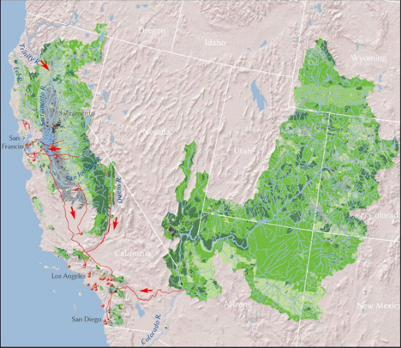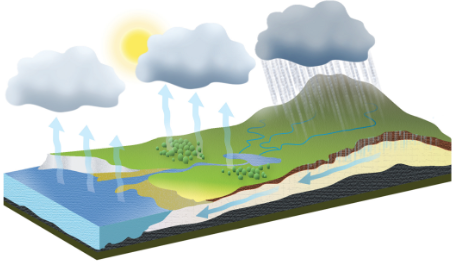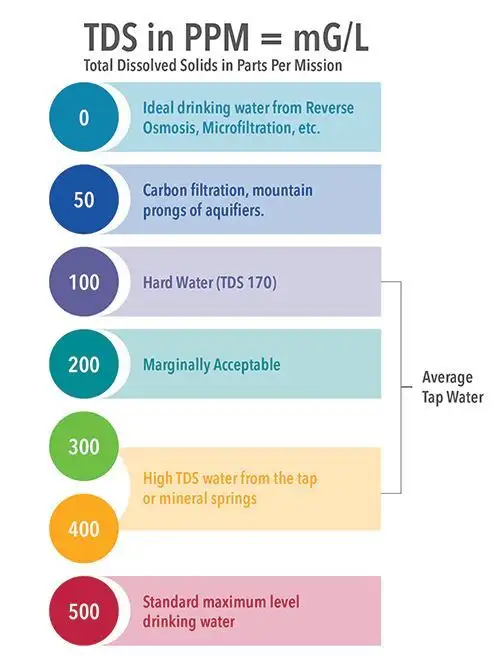Your California Water
Where does California get it's water from?
California water comes from ground water, from rainfall and from as far away as the Colorado river.
- Our water comes both from California sources, but also from as far away as Colorado and Wyoming.
- Water travels hundreds of miles through both natural rivers and man made aqueducts, both open to the air and contamination, as well as underground.


What is hard water?
Rainfall collects minerals as is passes through sedimentary rocks.
- Water is a solvent, meaning it can dissolve chemical compounds.
- When rain falls onto sedimentary rock, it percolates through the ground slowly, dissolving small amounts of chemical compounds that it takes with it.
- These chemical compounds are mostly Calcium and Magnesium, although others, like Iron, can be dissolved too.
- As the water, which now contains minerals, travels through the ground, it starts to gather in rivers, lakes and reservoirs.
- From there it passes into our water supply, eventually coming through our pipes at home to be used for drinking, cooking, washing and heating.
How is Water Hardness Measured?
Water Hardness is measured by TDS. Total Dissolved Solids.
Total dissolved solids (TDS) are the amount of organic and inorganic materials, such as metals, minerals, salts, and ions, dissolved in a particular volume of water; TDS are essentially a measure of anything dissolved in water that is not an H2O molecule. The EPA sets a maximum contamination level of 500 for “fresh water” sources.
According to Irvine Ranch Water District, they measure hardness in the ground water supply to be between 176-810 PPM as of their 2023 water quality report depending upon location tested.
Average Hardness Levels in SoCal


